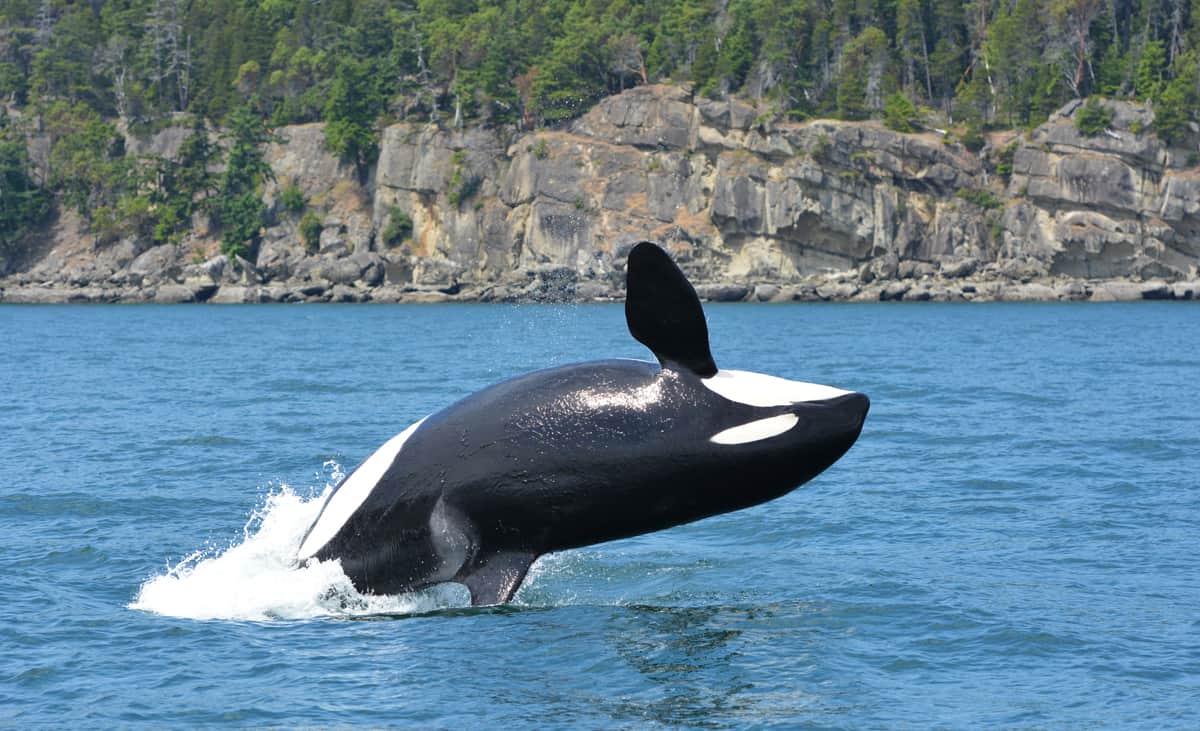Salmon. Salmon. Salmon.
The Oxford English Dictionary definition:
“A large edible fish that is a popular sporting fish, much prized for its pink flesh. Salmon mature in the sea but migrate to freshwater streams to spawn.”
Suggested Oxford amendment:
“Critical to the survival of the Southern Resident Killer Whales (SRKW)”.

The SRKW have been classified as an endangered species in Canada since 2003. Despite this designation there are only 75 of these animals in existence today and even this number is under threat. It is clear action needs to be taken.
The underlying single largest concern for the SRKW is the lack of sufficient prey availability. A lack of prey means there is not enough food on the table for the SRKW and they are starving to death. If the lack of prey problem is addressed, all other problems go away.

The reality of the salmon shortage was very evident this week as new drone footage of Southern Resident J17 and her calf J53 were obtained. Both were seen to have undergone a significant decrease in body condition since last fall. J17 in particular was displaying a “peanut-head”, a sign of fat & blubber loss. J17, the mother, is particularly vulnerable to the lack of food availability as pregnancy and lactation create a larger energy deficit than normal. The decline of these two whales (J17 & J53) follows the death of 4-year-old J50 last year. It is yet another blatant reminder that the situation needs improving and putting more salmon in the ocean is a sure-fire way to do that.
In short, hungry whales are not happy whales so the solution = give them more food! What’s their food you ask – well 82% of it, give or take, is Chinook Salmon.

SpringTide Whale Watching & Eco Tours and its owners are hugely involved with the Sooke River Chinook Revitalization Initiative (SRCRI). This salmon project, entering its 4th year, all starts with adult Chinook bucks and does (males and females) as “brood stock” and then incubating their fertilized eggs through the winter in the best of conditions that nature has to offer – at every step of the way! Once the salmon reach “smolt size” in the spring, 2.5-3 inches long, they are placed in a temporary marine sanctuary enclosure for 3-6 weeks. To preps them for the big open ocean, they acclimate to salt water and they grow healthy and hearty while unmolested from predators! This is called imprinting – allowing them to familiarize themselves with the minute mineral composition of the local waters so they return to spawn in four years! The fish are released at times when the vast majority of their predators are roosting (birds-cormorants, seagulls) and hauled out (seals, sea lions, otters), namely in darkness. The fish is also timed to be at a high tide so the ebb currents help carry them to the open ocean. In the open ocean there is more food for them and predators are more spread out, increasing the salmon’s survival rate.

The plump and healthy Chinooks then make their way into the ocean becoming a vital link in the Salish Sea food chain that has been distinctly lacking.
Our project has raised, reared, and released approximately 1,300,000 Chinook smolts over the last three years! And it would be more if the government would let us, but the Department of Fisheries and Oceans reduced our allowable output this year, as unbelievable as that sounds.
This is more new salmon production for the SRKW than has been produced by all our governments, combined!
This community based initiative is wholly funded with generous contributions by our owners, Dan & Joanne Kukat, SpringTide Whale Watching, other like-minded local businesses & individuals, and hard working volunteers. Here at SpringTide we are huge supporters of this program!
When you go whale watching with SpringTide, a portion of your Conservation Donation goes directly to fund this project, so you, the company, SpringTide, and its owners become partners in the conservation of the Endangered Southern Resident Killer Whales!

